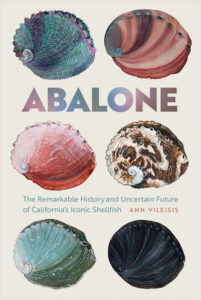 Whether you know them best sautéed, pan fried, as that delicious sushi bar favorite awabi, acting as the vessel for your sage smudge, or as the source of the decorative inlays in your favorite guitar, you likely have encountered abalone in your life – perhaps frequently. However beyond their most popularly familiar final forms utilized by us humans from the distant past right up to the present day, the members of the Haliotidae family are fascinating creatures all to themselves, playing – for example – a key role in the ecological balance of kelp forests along the Pacific coast of North America.
Whether you know them best sautéed, pan fried, as that delicious sushi bar favorite awabi, acting as the vessel for your sage smudge, or as the source of the decorative inlays in your favorite guitar, you likely have encountered abalone in your life – perhaps frequently. However beyond their most popularly familiar final forms utilized by us humans from the distant past right up to the present day, the members of the Haliotidae family are fascinating creatures all to themselves, playing – for example – a key role in the ecological balance of kelp forests along the Pacific coast of North America.
Of the fourteen species of abalone found around the world, seven are found off the cost of California. And as abalone has long been such a popular source of both food and decoration to humans, given the number of the latter so rapidly increasing over recent years, it’s not surprising that the populations of many of abalone species are already, or are now beginning to be, of conservation concern.
In her new book Abalone; The Remarkable History and Uncertain Future of California’s Iconic Shellfish, independent scholar Ann Vileisis examines the past, present, and potential futures of these “once abundant but now tragically imperiled shellfish.” Reported to be “the first and only comprehensive history” on the subject, this is a book that is most worth the attention of ecologists and epicures alike.
If you enjoyed reading this, please consider signing up for The Well-read Naturalist's newsletter. You'll receive a helpful list of recently published reviews, short essays, and notes about books in your e-mail inbox once each fortnight.
